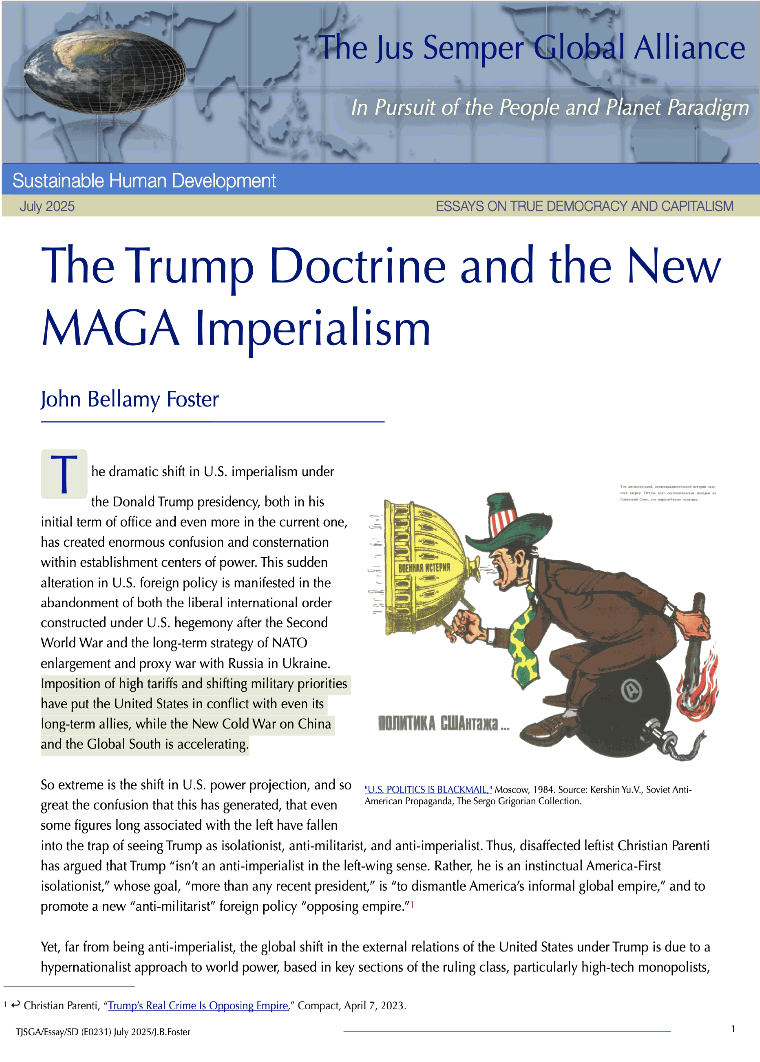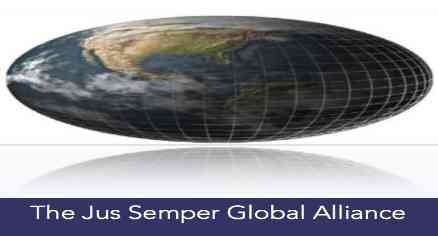John Bellamy Foster So extreme is the shift in U.S. power projection, and so great the confusion that this has generated, that even some figures long associated with the left have fallen into the trap of seeing Trump as isolationist, anti-militarist, and anti-imperialist. Thus, disaffected leftist Christian Parenti has argued that Trump “isn’t an anti-imperialist in the left-wing sense. Rather, he is an instinctual America-First isolationist,” whose goal, “more than any recent president,” is “to dismantle America’s informal global empire,” and to promote a new “anti-militarist” foreign policy “opposing empire.” Yet, far from being anti-imperialist, the global shift in the external relations of the United States under Trump is due to a hypernationalist approach to world power, based in key sections of the ruling class, particularly high-tech monopolists, as well as Trump’s largely lower-middle class followers. According to this neofascist and revanchist perspective, the United States is in decline as a hegemonic power and threatened by powerful enemies: Cultural Marxism and immigrant “invaders” from within, China and the Global South from without, while hindered by weak and dependent allies. The radically new imperialist strategy represented by the Trump administration, particularly in its second coming, is based on the notion of “America First.” This constitutes a rejection of the traditional U.S. role as a hegemonic world power in favor of a hypernationalist America First imperium. A manifestation of this is the U.S. attack on international organisations over which it does not have complete dominance or where it supposedly carries disproportionate burdens, such as the United Nations or even the NATO alliance. Moreover, trade relations are treated not so much as mutually beneficial exchange processes (which in reality are primarily to the benefit of the wealthier nations), but rather as transactional relations to be determined solely on the basis of national power. The most likely result of such developments—if they are not stopped—is a New Age of Catastrophe, on a scale not unlike the 1930s, characterised by economic, ecological, and war-induced destruction.5 This will lead not to increased U.S. dominance but to its accelerated decline, as its dollar hegemony and the international institutions on which U.S. power has historically rested are further undermined. Within the Trump regime itself, Washington’s attempts to project its power globally will only intensify the internal conflicts between monopoly-finance capital with its global economic interests and Trump’s more narrowly nationalistic Make America Great Again (MAGA) movement on the ground. All attempts to keep such a reactionary regime together will require increased repression, while the future will depend on the scale of revolt that this repression engenders, both nationally and globally.
For a full read of this brief, click here or on the picture to download the pdf file.
|

- © The Jus Semper Global Alliance
| Home |  | Resources |  | Democracy Best Practices |  | The Trump Doctrine and the New MAGA Imperialism |


